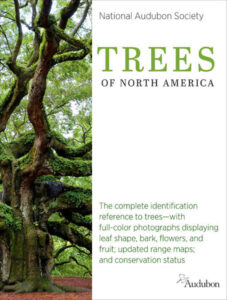 While the National Audubon Society has a long and justly respected name in the world of natural history books, the history of these books themselves has been a bit – shall we say – “up and down.” Those sufficiently long in the tooth (such as myself) may well remember the well-crafted volumes by such authoritative authors as Richard Pough, with their well-wrought and thorough yet never prolix text, finely detailed black & white illustrations, and in later editions even central color plate sections.
While the National Audubon Society has a long and justly respected name in the world of natural history books, the history of these books themselves has been a bit – shall we say – “up and down.” Those sufficiently long in the tooth (such as myself) may well remember the well-crafted volumes by such authoritative authors as Richard Pough, with their well-wrought and thorough yet never prolix text, finely detailed black & white illustrations, and in later editions even central color plate sections.
Then of course, there was that later series of field guides that, while no doubt well-intentioned and admittedly commercially successful, has become widely known among experienced naturalists for employing photographic images far too small to be of any meaningful use (those of you familiar with its volume on birds will no doubt recall the infamous image of the Vaux’s Swift that was little more than a black dot against a blue sky).
Fortunately, for the most recently published addition to the Audubon library, the just-published National Audubon Society Trees of North America a number of the problems seen in its immediate predecessor series have been improved upon, although some peculiarities still remain. This new guide presents its readers with a well-organized (following the Angiosperm Phylogeny Group classification system), thoroughly illustrated, and easy to use reference guide to “over 540” of the continent’s most likely encountered tree species.
Not being an exhaustive reference guide (North American tree species number well over 1,000), the editors of Trees of North America – who somewhat curiously are unidentified – opted not to include a dichotomous key, preferring to employ an effective visual and Zeitgeist based identification system that is better suited to the more general readership that is the book’s assumed primary readership. Employing single page presentations (with range maps, of course), made quickly accessible by both a family color-coding system and silhouette thumb tabs, the species accounts are bracketed by a nicely readable opening introduction to the biology of trees, and closed by an concise overview of taxonomic tree families (which, given the expected experience level of the anticipated readership, I think I would rather have placed before the species accounts), and a helpful, basic, clearly written glossary and index, Trees of North America is well suited as a reference guide for those just beginning to learn tree identification as well as for school and family libraries.
It is worth noting that Trees of North America was published simultaneously with another new and noteworthy reference guide bearing the Audubon name: the National Audubon Society Birds of North America – which I’ll take up next time.
Available from:
If you enjoyed reading this, please consider signing up for The Well-read Naturalist's newsletter. You'll receive a helpful list of recently published reviews, short essays, and notes about books in your e-mail inbox once each fortnight.

